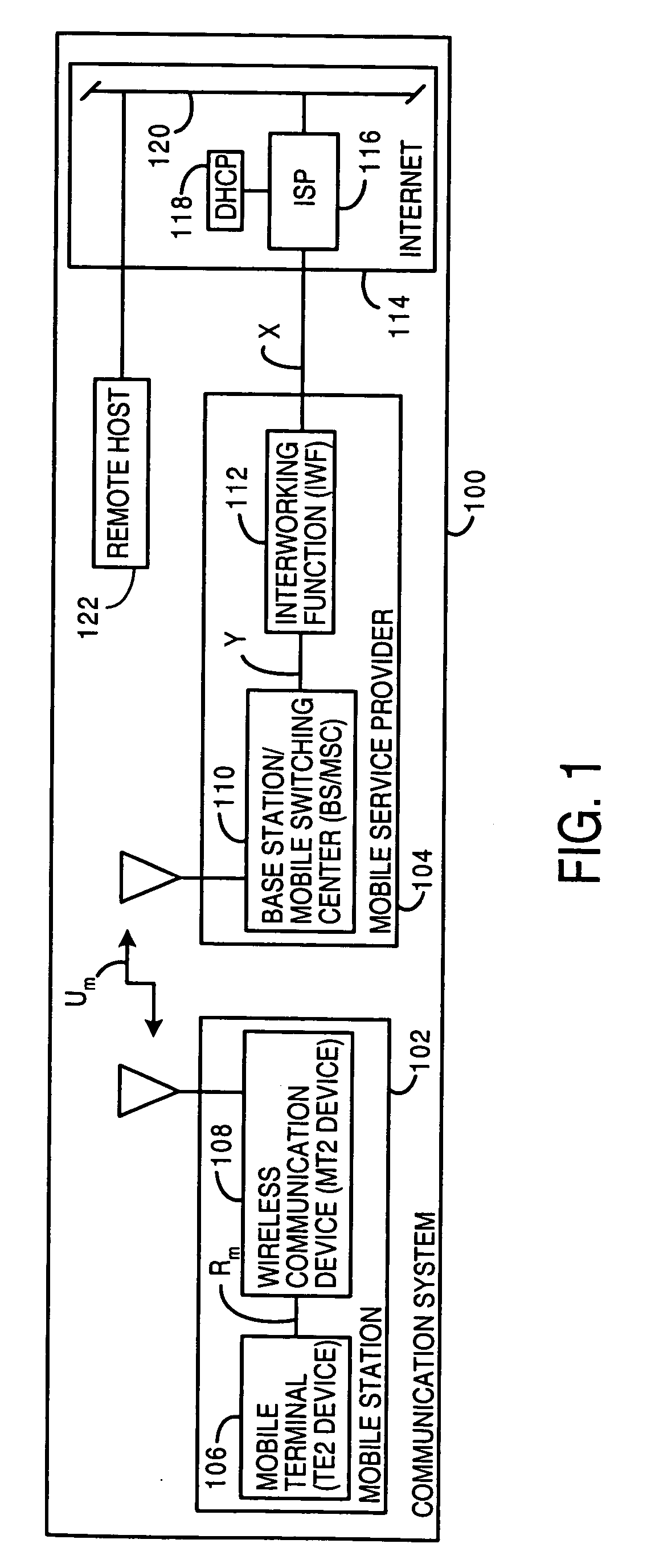Dynamically provisioned mobile station and method therefor
a mobile station and dynamic provisioning technology, applied in the field of dynamic provisioning mobile stations and methods therefor, can solve the problems of voice quality starting to decline, delay in mobile environment may have a greater perceptual impact upon users, and very tight delay constraints for voice-over-ip services (voip)
- Summary
- Abstract
- Description
- Claims
- Application Information
AI Technical Summary
Benefits of technology
Problems solved by technology
Method used
Image
Examples
Embodiment Construction
[0062] The embodiments herein provide a mobile station manager, a mobile station, and a communication system that allow a user to access telecommunication provider services and communicate messages, with different wireless communication protocols and carrier access methods, using mobile terminal devices that may not be ISDN-compatible. As used herein, the term "provisioning" corresponds to the acts of performing a selected function for the purpose of configuration, resource management, Quality-of-Service selection, fault and event response, or a combination thereof. Provisioning also may include additional features, such as implementation of policies affecting mobile terminal device rank and priority, communication security and authentication, and other procedures which may be advantageous to implement using mobile station.
[0063] By provisioning resources, including configurations, for one or more attached mobile terminal devices, the access to services provided by embodied versatil...
PUM
 Login to View More
Login to View More Abstract
Description
Claims
Application Information
 Login to View More
Login to View More - R&D
- Intellectual Property
- Life Sciences
- Materials
- Tech Scout
- Unparalleled Data Quality
- Higher Quality Content
- 60% Fewer Hallucinations
Browse by: Latest US Patents, China's latest patents, Technical Efficacy Thesaurus, Application Domain, Technology Topic, Popular Technical Reports.
© 2025 PatSnap. All rights reserved.Legal|Privacy policy|Modern Slavery Act Transparency Statement|Sitemap|About US| Contact US: help@patsnap.com



